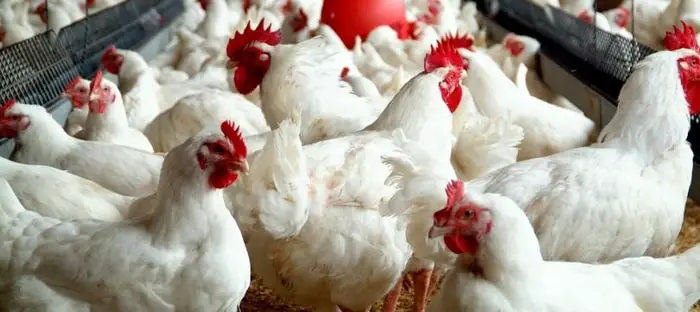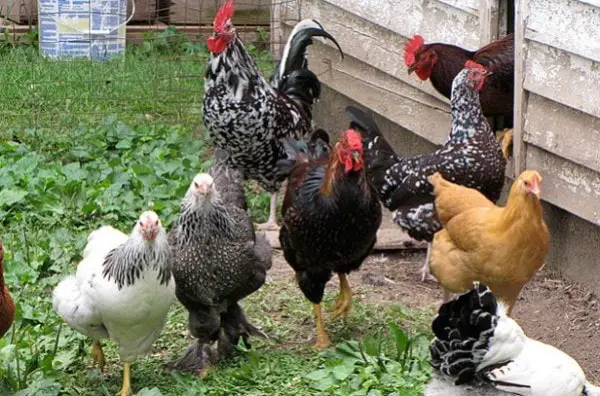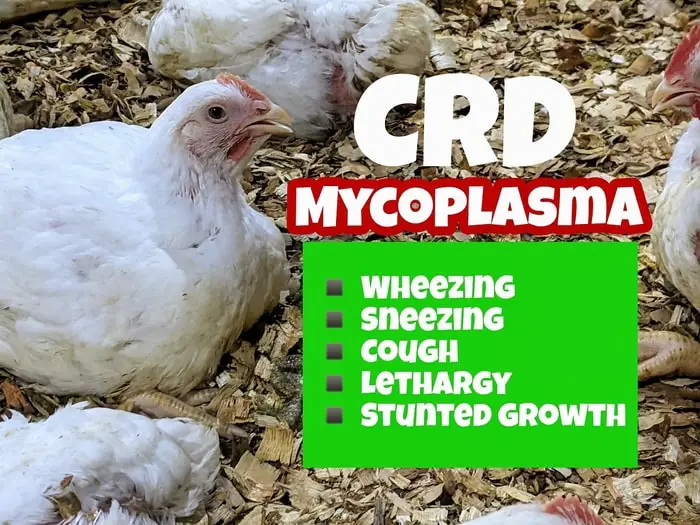Mycoplasma gallisepticum or Mycoplasma in Chickens or Avian mycoplasmosis is a chronic respiratory disease characterized by respiratory rales, coughing, nasal discharge, and sinusitis. The disease occurs naturally in chickens, turkeys, and quails. Turkeys are more susceptible to infection than chickens. The organisms have also been isolated from pheasants, quails, partridges, and ducks. It affects all age groups of birds, but young birds are more susceptible to this disease.
Important Information on Mycoplasma in Chickens
Poultry farming is a profitable business throughout the world. Poultry is one of the significant suppliers of protein in our daily meals by providing meat and eggs. Poultry farmers often face diseases related to chronic respiratory diseases (CRD) like Mycoplasma in chickens. In my article, I shall discuss the most common information about the disease.

Epidemiology of Mycoplasmosis in Poultry
M. gallisepticum is a common pathogen of upland game birds raised in captivity, and it has been isolated from ducks and geese. Isolation of M. gallisepticum from free-ranging peregrine falcons and a yellow-napped Amazon parrot is evidence of a diverse host range that can become infected by this organism. Chickens and turkeys are commonly affected by the organisms, and direct contact of susceptible birds with infected carrier birds causes outbreaks in poultry flocks.

Transmission of Avian Mycoplasmosis
The typical route of transmission of the disease are:
- Egg transmission is the primary route of transmission of the disease.
- It also transmits by direct or indirect contact, in which case the organisms gain entry through the respiratory tract.
- Aerosol transmission via dust or droplets facilitates the spread of M. gallisepticum throughout the flocks.
- Chronic Respiratory Disease (CRD) is usually complicated due to the superinfection of birds with pathogenic bacteria and viruses such as Newcastle Disease (ND), Infectious Bronchitis (IB), and Avian Influenza (AI) invasion.
Causes of Mycoplasma in Chicken
The disease is caused by varieties of organisms but Mycoplasma
gallisepticum in most cases and Mycoplasma synoviae in some cases have been reported to be important in causing respiratory disease.
Pathogenesis of Mycoplasmosis in Poultry
The organisms were gaining entry through the respiratory tract or via infected embryo, spread through blood, and settle in the respiratory tract’s epithelium. There they cause local irritation and damage the lining of the trachea, air sacs, and lungs. Mycoplasmas itself does not cause severe damage, but it does so when it becomes complicated by invading secondary organisms.

What are the Symptoms of Mycoplasma in Chickens?
The incubation period of the disease varies from 6 to 21 days. The primary symptoms are respiratory diseases such as:
- Abnormal breathing.
- Nasal discharge.
- Coughing.
- Sneezing.
- Facial swelling and lacrimation.
- Birds with synovitis show lameness.
- In layers, egg production decreases up to 20-30%.
- In broilers, cases are mostly noticed at four weeks of age with stunted growth and lowered feed efficiency.
- Inbreeding chicken, fertility, and hatchability rates are lowered, leading to an increase in the number of poor quality chicks.
- In chronic cases, chickens are emaciated and show mucopurulent nasal and ocular discharge with kerato- conjunctivitis.
- Turkeys usually have swelling sinuses under the eyes.
Pathological Lesions of Mycoplasma in Chickens
The most common pathological lesion you will find by post mortem examination are:
- The upper region of the respiratory tract is hypertrophied, red or yellowish-gray, and is covered with ash-gray or yellowish-gray viscous exudates.
- Air saculitis frequently develops with air sac walls becoming hypertrophied and turbid due to the presence of adhering viscous or yellowish cheesy exudates.
- Perihepatitis and pericarditis occur in cases of mixed infection with colibacillosis.
- The joints and toe pad are swollen, and breast blisters are formed frequently in case of infection with Mycoplasma synoviae.
Diagnosis of Mycoplasmosis in Chicken
The diagnostic procedures are as follows:
- The tentative diagnosis is made based on history, clinical signs, and postmortem lesions.
- Isolation and identification of the causative agent M. gallisepticum are required for confirmatory diagnosis.
- Your veterinary experts perform the confirmatory diagnosis.
- Your veterinarian can perform the detection of specific antibodies by Rapid Plate Agglutination test using colored antigens.
- The disease can also be detected by haemagglutination inhibition and ELISA tests.
The disease can be confused with Infectious bronchitis, Infectious laryngotracheitis, Newcastle disease, Infectious coryza, and Fowl cholera.
How Do You Treat Mycoplasma in Chickens?
The treatment strategies of the disease are as follows:
- Mycoplasma is resistant to antibiotics that act on cell walls such as penicillin but are sensitive to tetracyclines, Macrolides, quinolones, or tiamulin.
- Oxytetracycline or chlortetracycline is very effective for organisms.
- It is to be emphasized that treatment does not eliminate the carrier state in the infected flocks but will suppress the organism’s excretion in respiratory exudates and eggs.

How Do You Control Mycoplasma in Poultry?
The control and preventive measures of mycoplasmosis in chickens are as follows:
- Procurement of disease-free flocks and their maintenance in strict hygienic conditions.
- Regular monitoring of breeding flock for the presence of antibodies by plate agglutinations test.
- Cheerful birds should be isolated and must not be used for breeding purposes.
- Elimination of egg transmission of mycoplasmas in breeder flocks through medication, egg dipping, and egg heating.
- Immunization of birds with inactivated bacterins as well as with live culture vaccines.
- Prevention of other infectious diseases and environmental contamination like infectious coryza, infectious bronchitis, excess ammonia, dust, etc.
Final Advice on Avian Mycoplasmosis
Mycoplasmosis is a common respiratory disease in poultry and other domestic birds. The disease occurs in all age groups but most common in young and growing birds. The disease causes serious hamper in the production and performance of your farm. The farmer loses by the death of birds, reduced production, and treatment cost. In my article, I have discussed the most critical points on this disease. I think you will be benefitted from this article.